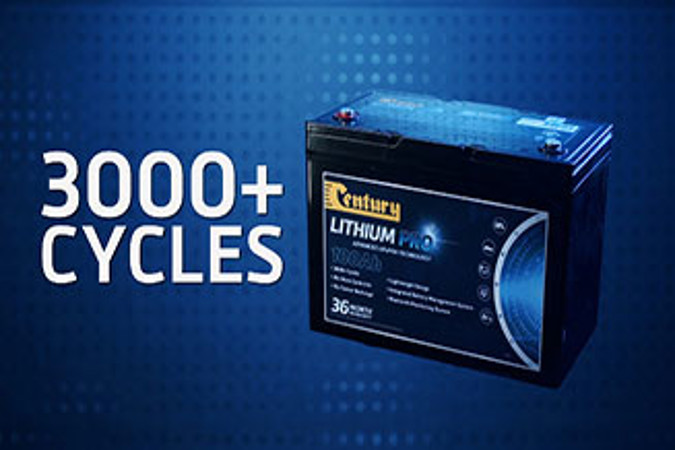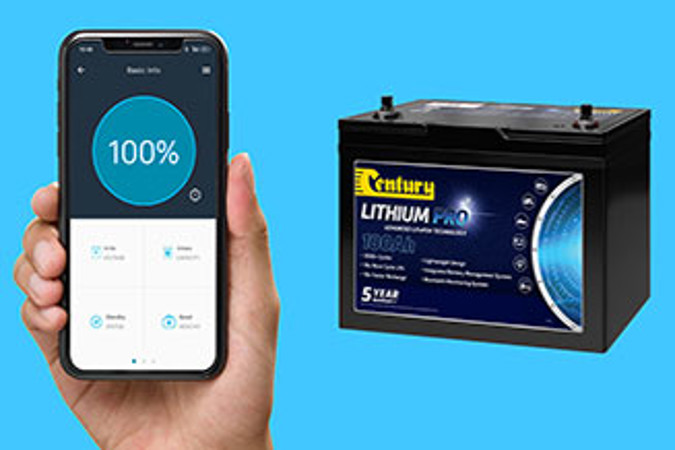When it comes to Deep Cycle work, there’s no doubt Lithium is the most technologically advanced option out there. A battery like the Century Lithium Pro can be regularly discharged down to 20% of its capacity and still achieve over 3000 cycles – compared to the recommended 50% depth of discharge on an AGM, you’ve got more usable power - and to top it off its also light – up to 50% lighter than equivalent AGM deep cycle batteries. They can also be recharged up to 10x faster than other battery technologies. But they do have their downsides – and the main one right now is cost.
So the question as to whether Lithium is the best solution for you, really comes down to how you’re going to use it. The amount of time you spend off-grid per year, how far you go, how long you plan to stay there for, and what items you’re hoping to power.
If you’re only going away 3 or 4 weekends a year, probably not. The cost of Lithium can be up to 3 to 4 times higher than equivalent AGM batteries plus you will need to upgrade and invest in new cabling, chargers or charging systems – and you probably won’t get your moneys worth out of that additional investment.
But if you’re a tourer, someone who is spending quite a bit of time away, or a grey nomad heading into retirement – a proper Lithium battery setup is something you should consider. For these use cases you’ll be able to better utilise the benefits lithium affords. The greater power density, allowing you to power more equipment with less batteries – taking advantage of the deeper discharge Lithium allows. Being able to spec solar panels which take advantage of the Lithium Pro’s 100A maximum recharge current. And saving weight in the process.
In fact, if you are going to use your set up on a regular basis the cost of ownership for lithium could save you in the long run. Given their cycles of 3000+ at 80% DOD they actually work out to cost less then AGM products as you would have to replace an AGM setup 4-5 times to achieve the same cycle life as a lithium pro.
So at the end of the day it’s really up to you to work out.. what do you hope to get out of your battery setup – and see how that balances out against the cost difference.
 Homepage
Homepage
 Homepage
Homepage


